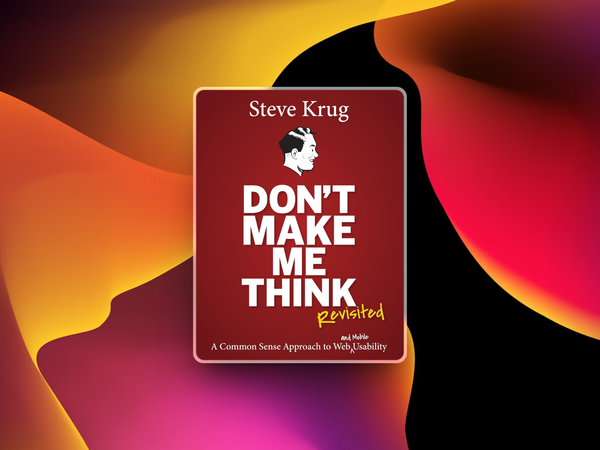Ever wondered why some apps and websites feel like a dream to use, while others make you want to throw your device out the window?
Well, in a nutshell, some websites have a dedicated team that understands UX, while others well... don't. To put it kindly. So let's dive into the world of User Experience design and uncover 10 laws that separate the pros from the "oh no's"!
Fitts's Law: The "Big Booty" Theory of Design
No, we're not talking about Kim Kardashian here.
Fitts's Law states that the time to acquire a target is a function of the distance to and size of the target. In other words, make important buttons big and easy to reach.
How often have you seen someone struggle with a button or link because it's too small? Now imagine how frustrating that is on a mobile device, or if you're a user with a disability.
When we consider Fitt's Law, we consider good accessible design for everyone.
Think of it as the "big booty" of design – impossible to miss!
Hick's Law: The Paradox of Choice
Ever stood in front of 50 flavours of ice cream, unable to decide?
That's Hick's Law in action. The more choices you present, the longer it takes to decide.
Imagine you visit an online store with a homepage that has 30 different categories listed in the main menu. Each category has subcategories, making it overwhelming to find what you need.
This overload of choices increases the time it takes for you to make a decision, leading to frustration and potentially leaving the site without making a purchase.
Now, consider a different online store that organises its categories into just five main groups, each with a few clear subcategories.
This streamlined navigation reduces the number of choices you have to consider at each step, making it quicker and easier for you to find what you’re looking for, leading to a more pleasant and efficient user experience.
Keep it simple, sweetie!
Jakob's Law: The Copycat's Guide to Success
Users spend most of their time on other sites.
What does that mean? Well, in a nutshell, users prefer familiarity over something perceived as unique. Why?
Users want to get shit done. They cannot get shit done if your navigation is fundamentally different from the norm.
Remember: If your design feels familiar, users will thank you. It's like wearing your comfy old sneakers to a new gym.
Law of Prägnanz: Keep it Simple, Stupid (KISS)
Our brains love simplicity. Or at least, mine certainly does.
Our brains are wired to favour simplicity because it makes processing information quicker and easier. When we're faced with ambiguous or complex stimuli, like intricate images or overloaded menus, our minds instinctively try to simplify them to make sense of them faster.
This is why we often interpret complex images in the simplest form we can.
For example, if you see an abstract, cluttered image, your brain might automatically group shapes and colours into recognisable patterns or forms, even if the image itself is confusing.
This process helps us make sense of the world more efficiently and reduces cognitive load.
So, when in doubt, ask yourself - can we simplify?
Miller's Law: The Magic Number Seven (Plus or Minus Two)
Our short-term memory can only hold about 7 items at once.
Imagine you're filling out a form on a website that requires you to input a lot of information. If the form is lengthy and asks for multiple pieces of information at once—like your name, address, phone number, email, and several other details—remembering all these fields can be challenging and stressful.
By dividing the form into smaller sections, each step only asks for a few pieces of information at a time.
This approach reduces the cognitive load on users because they only need to remember a limited amount of data for each step, which aligns better with the capacity of short-term memory (around 7 items).
This method not only makes the form less overwhelming but also helps users complete it more efficiently, leading to a smoother and less stressful data entry experience.
Parkinson's Law: Work Expands to Fill the Time Available
The phrase "Give a user too much time to complete a task, and they'll take all of it" means that if users are given an excessive amount of time to complete a task, they might end up taking longer than necessary.
This is because, with no clear deadline or sense of urgency, users may become less efficient, more distracted, or more likely to procrastinate.
In practical terms, this can apply to various contexts:
- Forms and Surveys: If a form or survey doesn’t have clear progress indicators or deadlines, users might spend more time than needed filling it out, potentially getting sidetracked or overthinking their answers.
- Tasks and Projects: In a work setting, if a project doesn’t have specific milestones or deadlines, team members might stretch their efforts over a longer period, reducing overall productivity.
- Website Design: In web design, if a process (like checkout or sign-up) doesn’t have well-defined steps or time constraints, users might take longer to complete it, which can lead to increased drop-off rates.
To mitigate this, it’s often beneficial to design tasks and processes with clear, reasonable timeframes and structured steps, helping users stay focused and complete tasks more efficiently.
Use this knowledge to create a sense of urgency and keep users engaged.
Peak-End Rule: The Power of First Impressions and Grand Finales
People often remember a website experience based on the most enjoyable or frustrating moment and how it concluded.
For instance, a smooth checkout process with a frustrating final step or a delightful product page with a confusing ending can strongly impact overall satisfaction.
Make sure your app's first impression is stellar and the checkout process is smoother than a freshly waxed dolphin!
Postel's Law: Be Liberal in What You Accept, Conservative in What You Send
Also known as the Robustness Principle, this law encourages designers to be flexible with user input but strict with their output.
A practical example of the Robustness Principle in web design is a form that accepts various date formats from users (e.g., "MM/DD/YYYY," "DD-MM-YYYY") but standardises and validates the date to a single format before submission.
This approach ensures flexibility in user input while maintaining consistency and accuracy in the system's output. It's like being a cool parent who lets their kid experiment with fashion but still makes sure they wear pants to school.
You'd be surprised how many times my kid has suggested going to school without pants.
Serial Position Effect: First and Last Call for Attention
People tend to remember the first and last items in a series best.
You can use the Serial Position Effect by placing the most important call-to-action buttons, like "Sign Up" or "Buy Now," at the beginning and end of a landing page.
This way, users are more likely to notice and remember these actions. For example, a product page might feature a prominent "Add to Cart" button at both the top and bottom of the page.
Put your most important info at the beginning or end of your content. The middle is where socks go to die.
Tesler's Law: The Law of Conservation of Complexity
Every application has an inherent amount of complexity that cannot be removed or hidden.
Imagine a file-sharing application.
Tesler's Law in this context is applied by deciding how to manage file-sharing settings. Instead of making users configure complex permissions for each file, the system handles it by providing default settings and simple controls.
Users still face some complexity, but it’s minimised by the system’s smart defaults and straightforward interface.
Your job is to figure out whether the user or the system will handle this complexity.
Listen, I know that this is just another list of 10 UX principles, and you might even be rolling your eyes while reading it.
As you probably know, UX is not an exact science, and the above list is supposed to spark debate and (fun) discussion. You won't use all of these together at once, and it depends on your context.
Remember, great UX is like a good joke – if you have to explain it, it probably isn't that good.
Now go forth and design like the UX superhero you were born to be! And remember, with great power comes great responsibility... to create interfaces that don't make people want to punch their screens.











